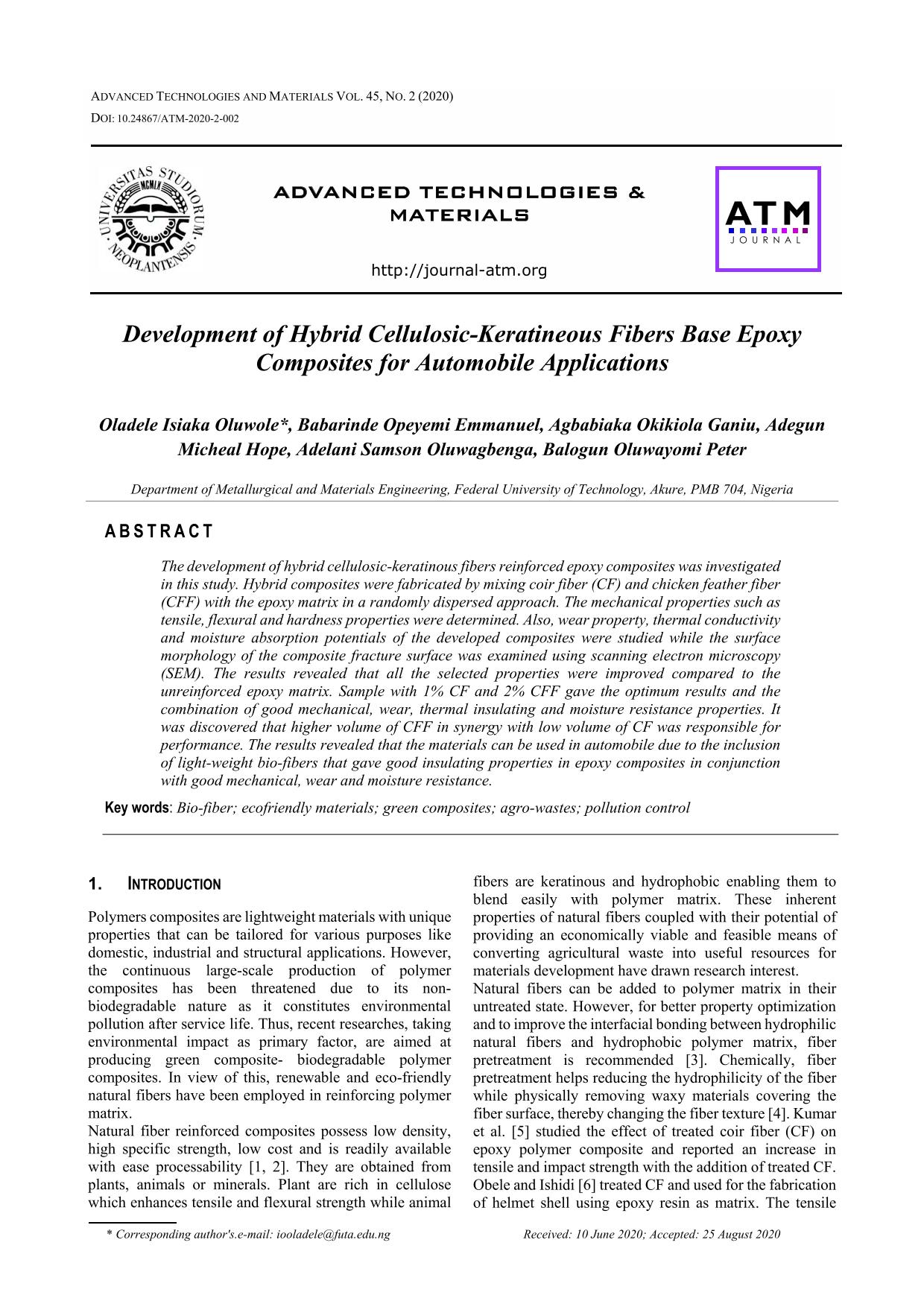Development of Hybrid Cellulosic-Keratineous Fibers Base Epoxy Composites for Automobile Applications

Published 2020-12-01
abstract views: 33 // Full text article (PDF): 13
Keywords
- Bio-fiber,
- ecofriendly materials,
- green composites,
- agro-wastes,
- pollution control
How to Cite

This work is licensed under a Creative Commons Attribution 4.0 International License.
Abstract
The development of hybrid cellulosic-keratinous fibers reinforced epoxy composites was investigated in this study. Hybrid composites were fabricated by mixing coir fiber (CF) and chicken feather fiber (CFF) with the epoxy matrix in a randomly dispersed approach. The mechanical properties such as tensile, flexural and hardness properties were determined. Also, wear property, thermal conductivity and moisture absorption potentials of the developed composites were studied while the surface morphology of the composite fracture surface was examined using scanning electron microscopy (SEM). The results revealed that all the selected properties were improved compared to the unreinforced epoxy matrix. Sample with 1% CF and 2% CFF gave the optimum results and the combination of good mechanical, wear, thermal insulating and moisture resistance properties. It was discovered that higher volume of CFF in synergy with low volume of CF was responsible for performance. The results revealed that the materials can be used in automobile due to the inclusion of light-weight bio-fibers that gave good insulating properties in epoxy composites in conjunction with good mechanical, wear and moisture resistance.

